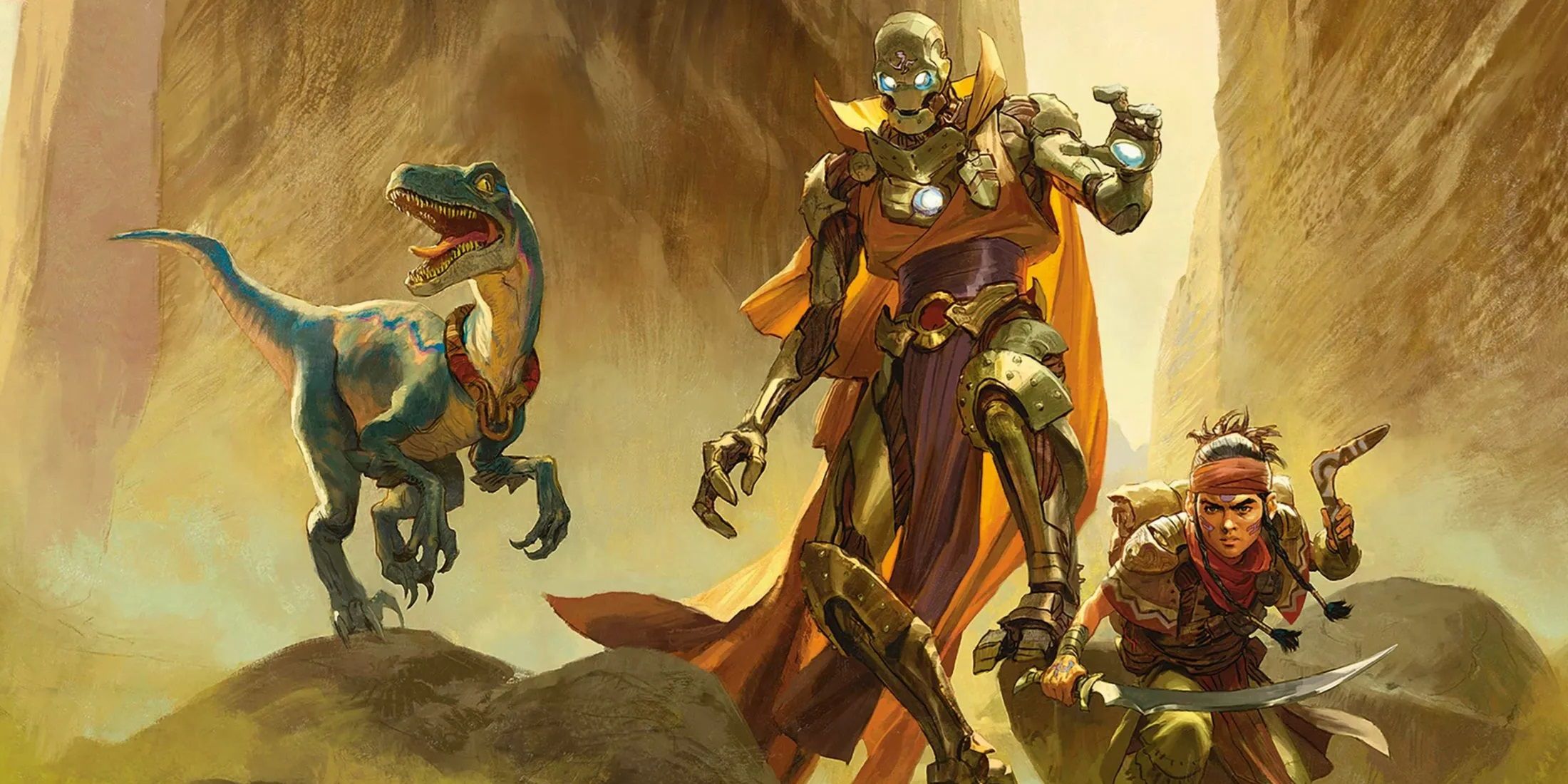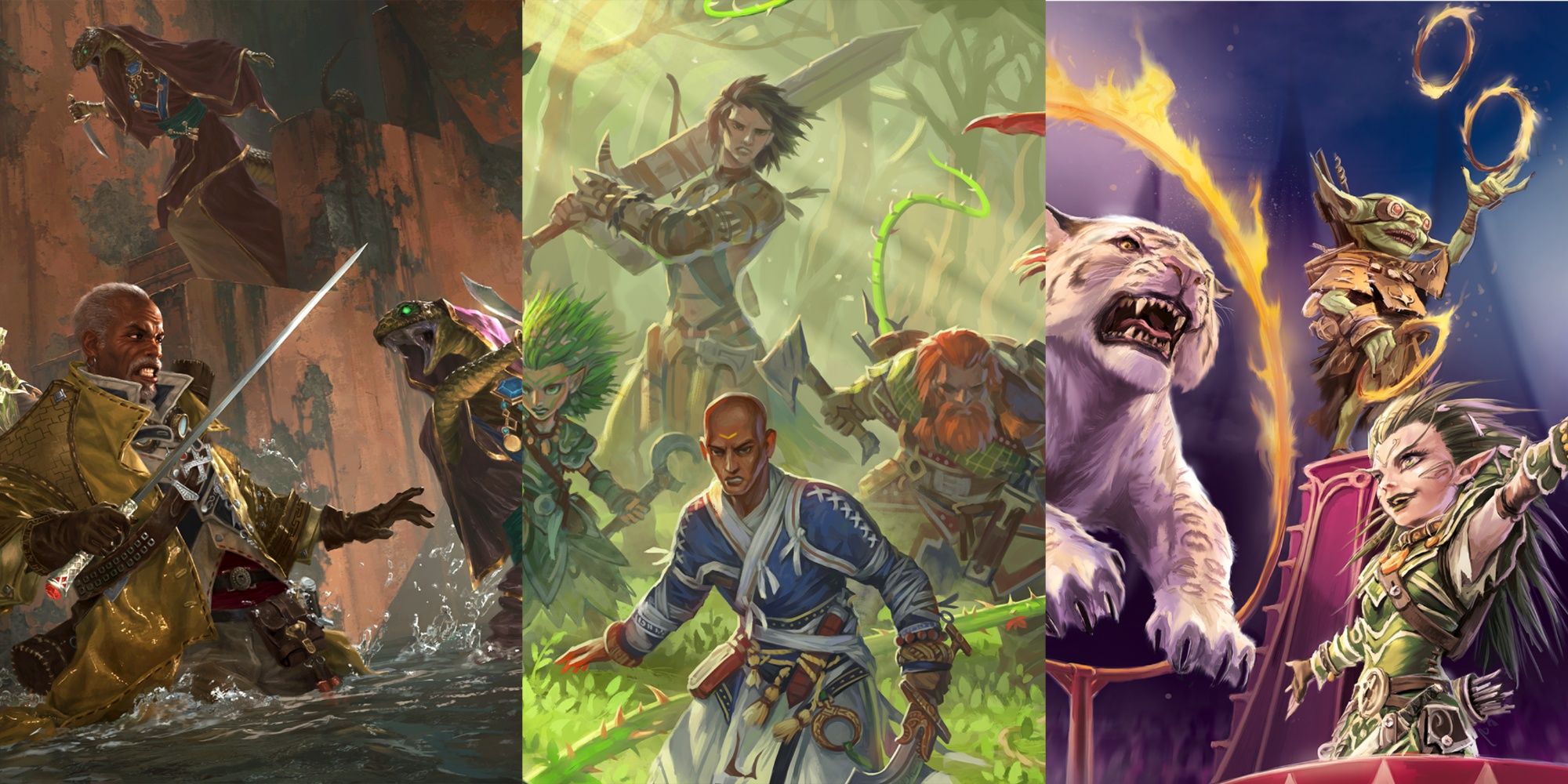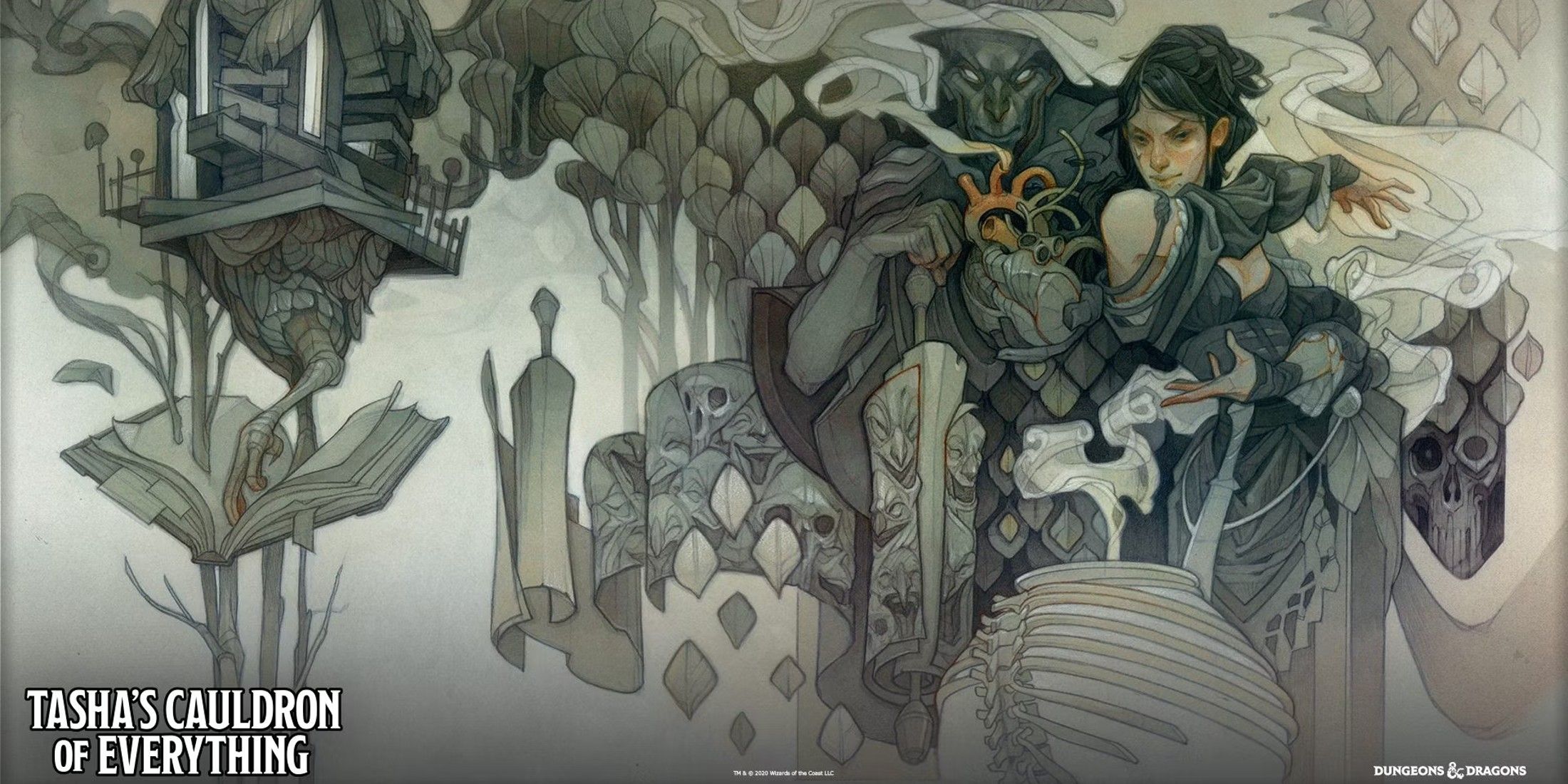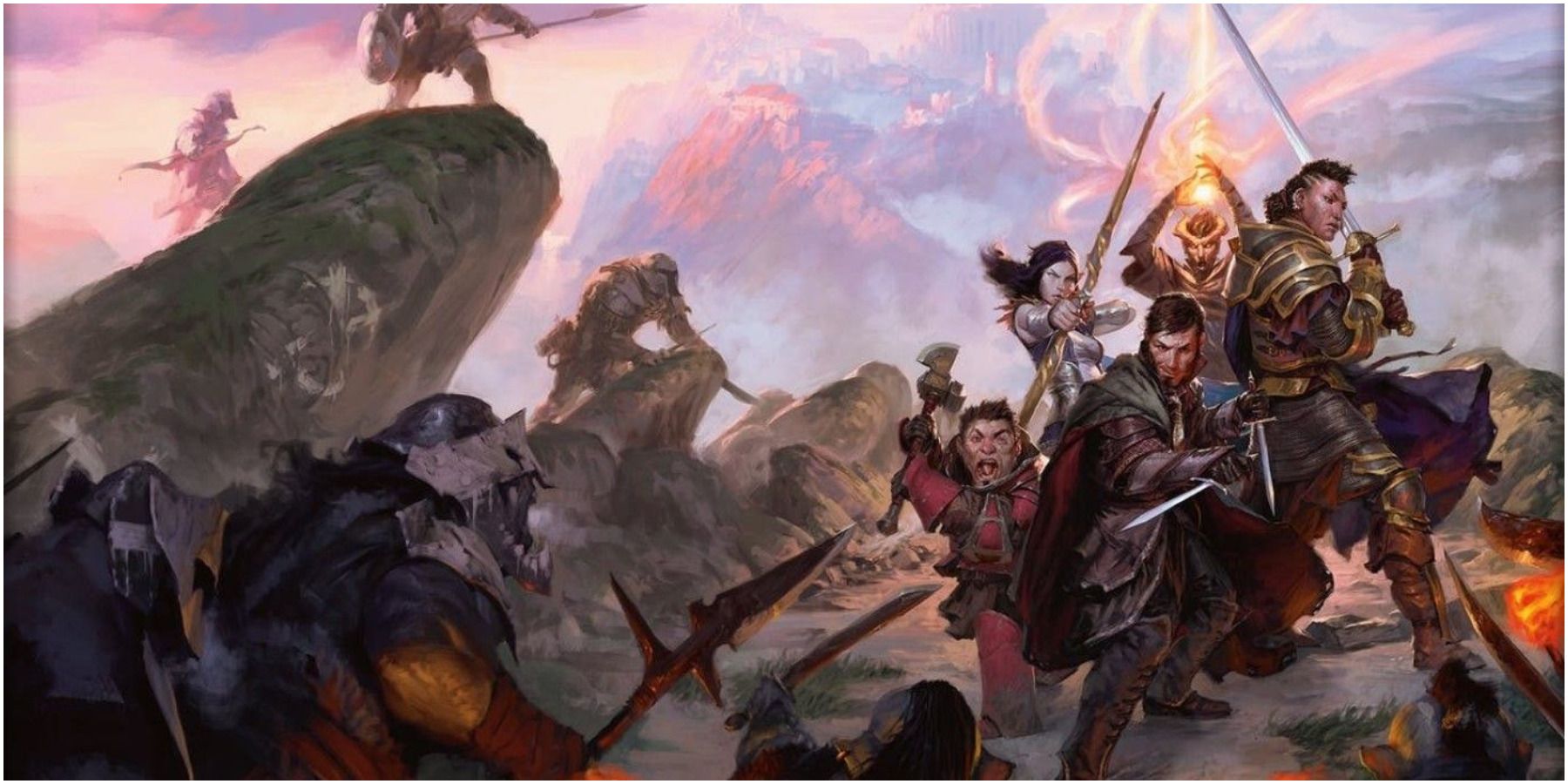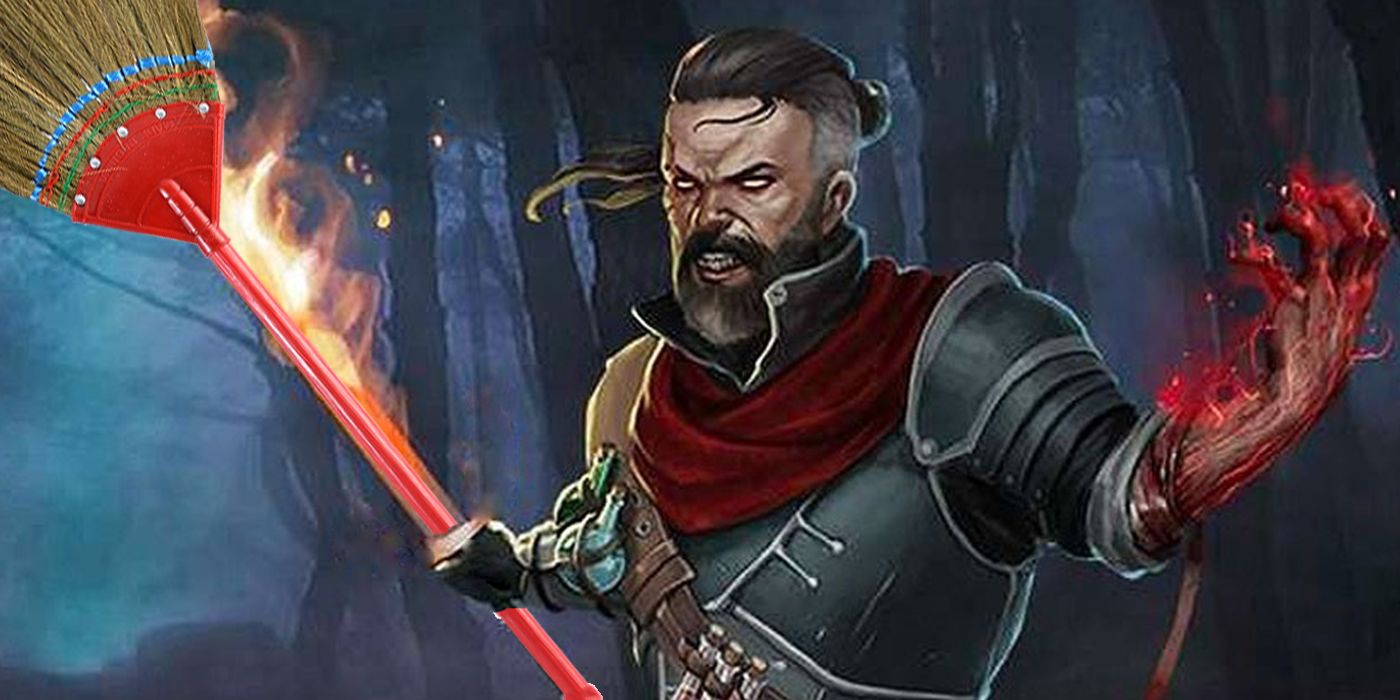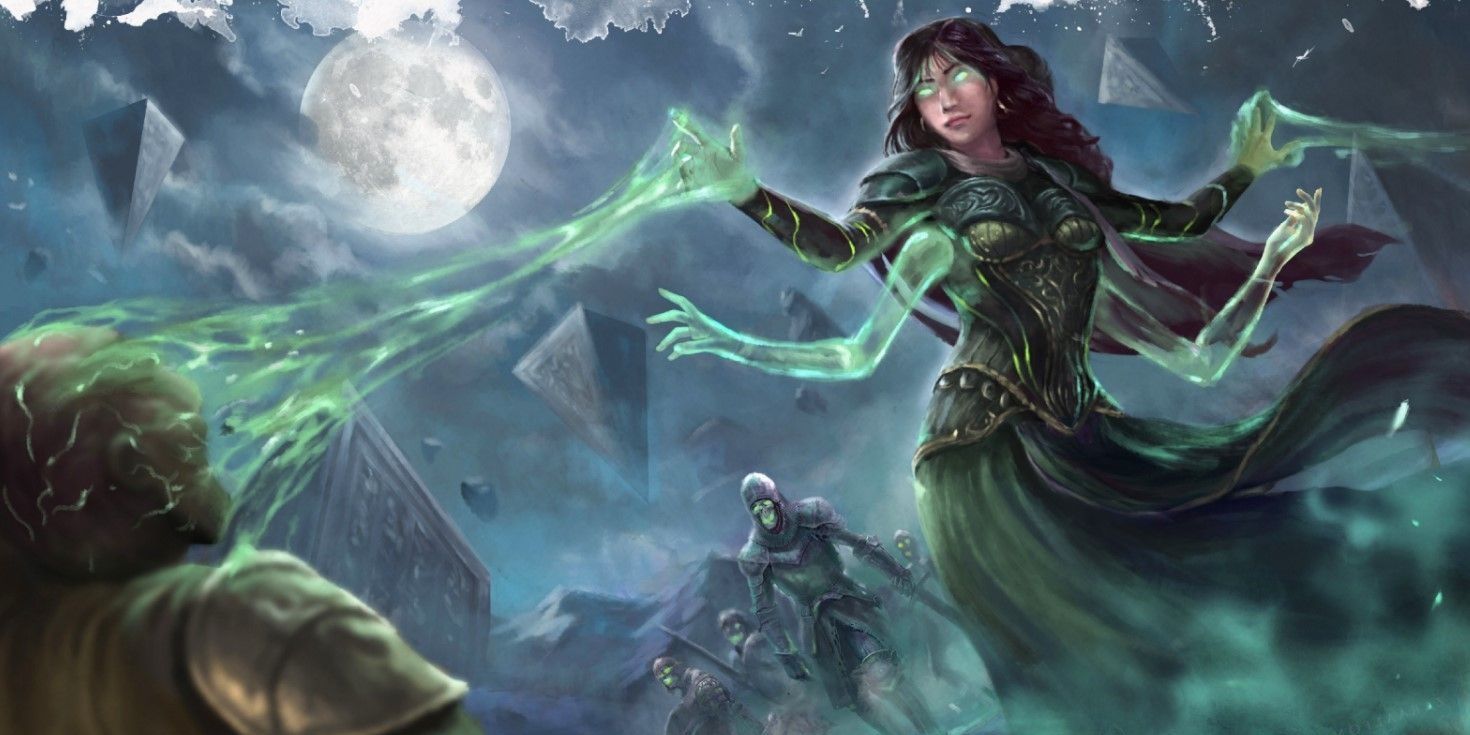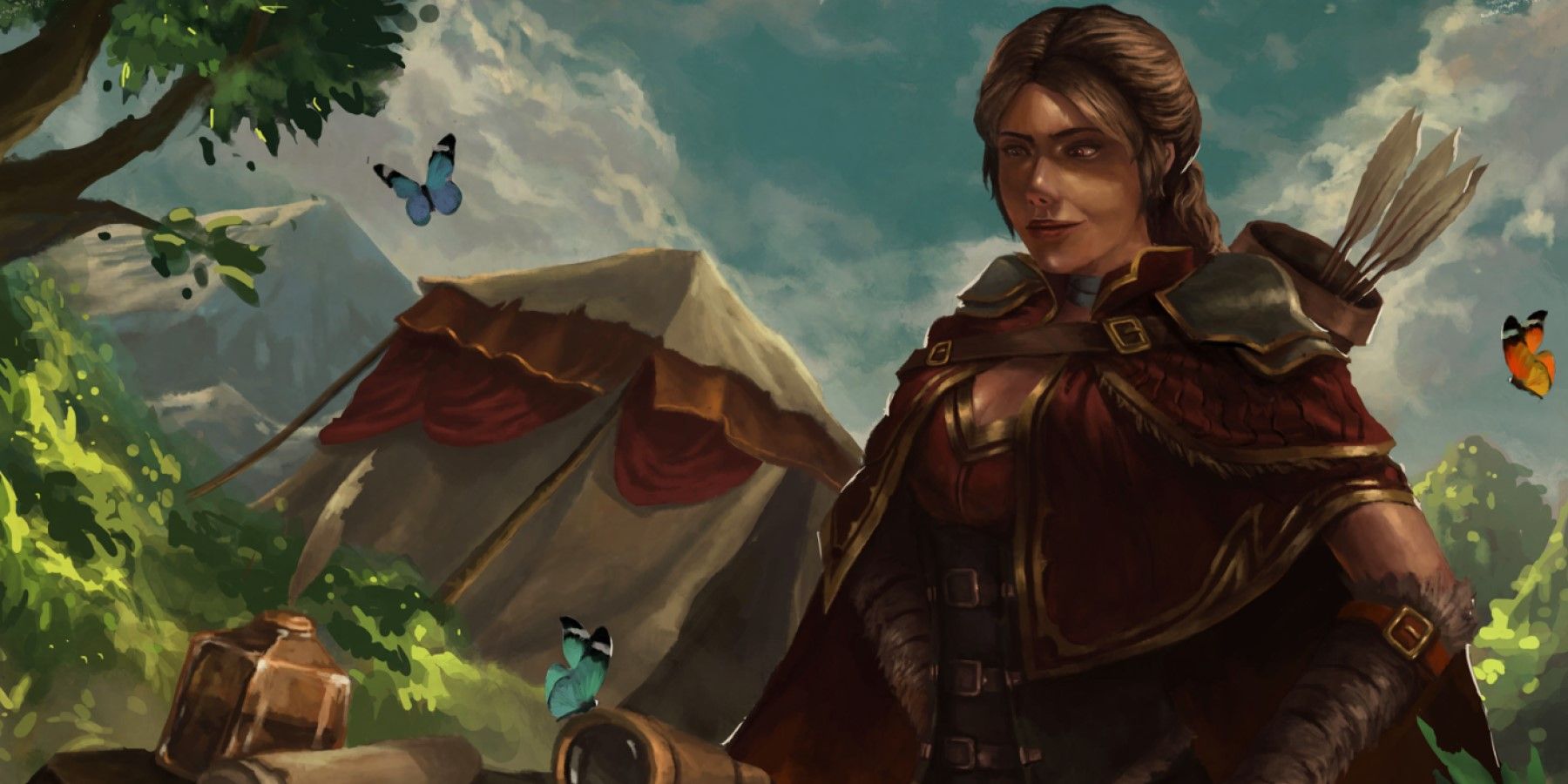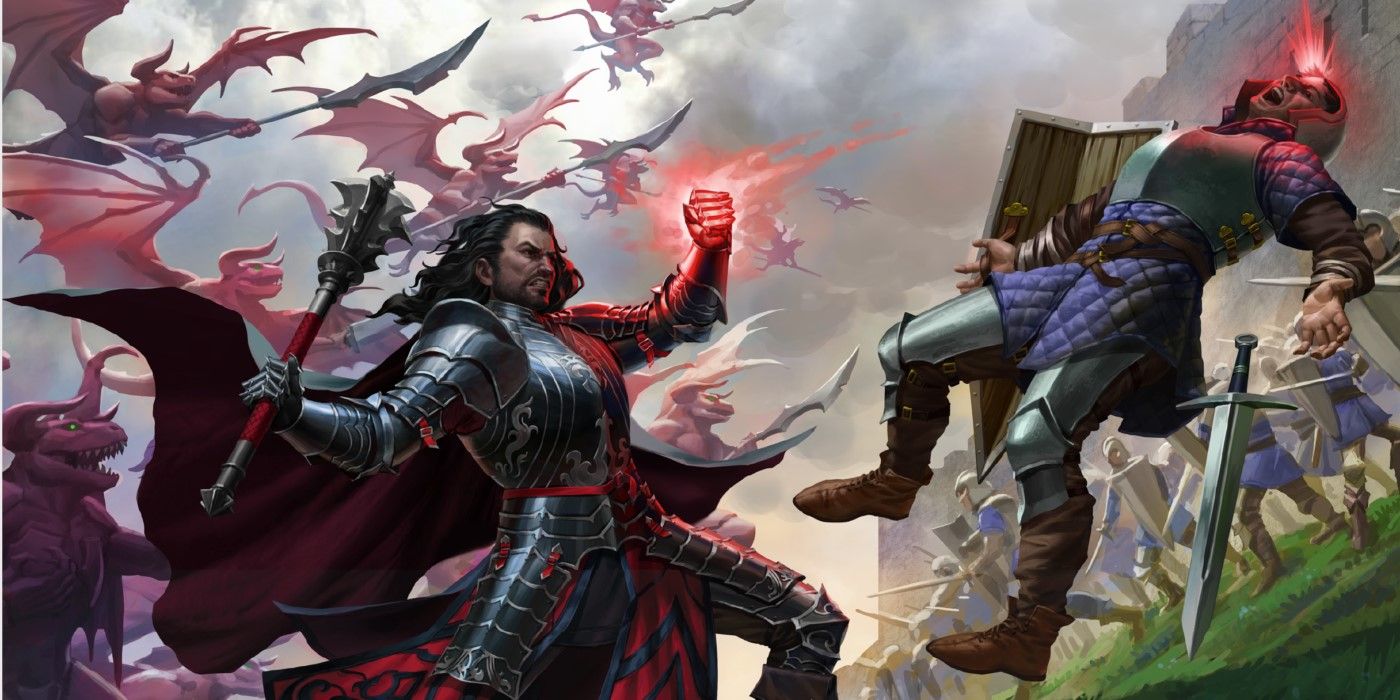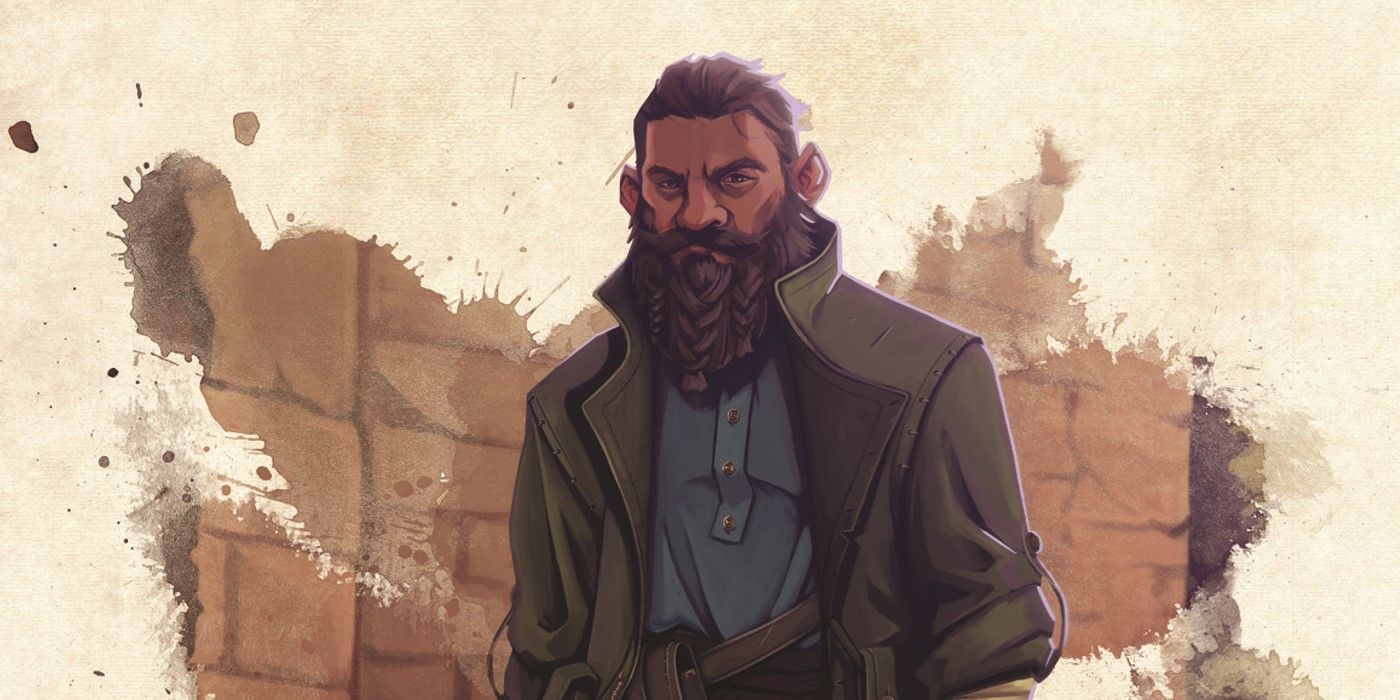Quick Links
Dungeons and Dragons Fifth Edition, the most recent incarnation of the genre-defining tabletop RPG, was first released back in 2014. Over the last five years, a steady stream of new books and updates have added depth to its character options. Despite this though, the game is yet to reach the scale of its direct predecessor, Fourth Edition, but this isn't necessarily a bad thing, as a more focused game is easier for new players to pick up. However, some players moving onto Dungeons and Dragons' Fifth Edition from older systems may find the lack of options a little stifling.
Fortunately, just like its predecessors, Fifth Edition boasts an active and enthusiastic homebrew community. While the great majority of these player-designed classes are often poorly balanced or try to do too much, there are some gems hidden among them. A good homebrew class must fill a gap that exists in the system, allowing players to follow an archetype that was either previously unavailable or disappointingly narrow.
Digging through the mountain of fan-inserts and poorly-balanced jacks-of-all-trades to find the well-crafted homebrews out there can be a real challenge. Many DMs may already have had a bad experience with an over-powered homebrew class, perhaps souring them to the concept altogether. To help out, and to make it clear that these well-done homebrew classes really do exist, here's our list of the best and most popular.
Updated April 17, 2022 by John Higgs: Dungeons and Dragons Fifth Edition has grown steadily over the past few years, with a stream of new adventures, rulebooks, and class options for players to dive into. Despite the huge number of subclasses and feats that have been added to the game since launch, the Artificer remains the only new class that has been released. Fortunately, the homebrew community has been hard at work, adapting new rules found in books like Tasha's Cauldron of Everything to bring players a huge range of interesting and well-designed homebrew classes.
Matt Mercer's Blood Hunter
Created by Matt Mercer, DM of the popular Critical Role Dungeons and Dragons podcast, the Blood Hunter is actually a semi-official class. While it appears in a special category on the official DnD website, it is still classified by most as homebrew content.
The Blood Hunter is a damage-dealing melee class inspired by The Witcher series. Filling a niche between the Ranger and Warlock, the Blood Hunter combines dark magic, alchemical concoctions, and martial prowess to become the ultimate monster-hunter.
The three core Features of the Blood Hunter are the Hunter's Bane, the Crimson Rite, and the Blood Maledict. The first comes at level one, giving the Blood Hunter Advantage while tracking Fey, Fiend, and Undead creatures. It also prevents the Hunter from being surprised by creatures of those types.
The Crimson Rite, also gained at 1st level, allows the Blood Hunter to sacrifice Hit-Points to imbue their weaponry with extra damage of a chosen type. Finally, the Blood Maledict gives a 2nd level Hunter access to a variety of Curses. These can initially be cast only once per short-rest, but help to widen the Hunter's tactical options.
There are currently four subclasses available for the Blood Hunter, each focusing on a different aspect of the class:
- The Order of the Mutant leans heavily into alchemy and potions, providing Mutagens that give various buffs when consumed.
- The Order of the Ghostslayer specializes the Blood Hunter in defeating ethereal creatures and the Undead, granting them a source of Radiant damage through their Crimson Rite.
- The Order of the Lycan gives the ability to transform into a powerful were-creature, buffing almost all physical stats at the expense of a dangerous bloodlust.
- The Order of the Profane Soul is for those who've made a pact with a powerful Patron, granting them Warlock-esque spellcasting to augment their sword-work.
Kibbles' Occultist
Created by well-known Reddit homebrewer u/KibblesTasty, the Occultist brings together several niche classes from previous editions of D&D into a single class. The Occultist is a different flavor of spell-caster, one that uses a spiritual combination of arcane and divine power to perform their magic.
Like Sorcerers and Warlocks, Occultists choose their subclass right from level 1, making it a much more impactful and meaningful decision. Almost all the Occultist's features are tied to these subclasses, and the only thing they really share is their spell list and mastery of ritual magic.
- The Tradition of the Witch focuses on curses and familiars, with a choice between three covens representing good, evil, and neutral magic, as well as powerful debuffing abilities.
- The Tradition of the Hedge Mage is for those characters who pursue strange and eccentric magical abilities. In practice the Hedge Mage is a little like a combined Sorcerer and Bard, modifying their spells on the fly and stealing them from other classes.
- The Tradition of the Oracle leans more into the divine side of the Occultist class, pursuing powerful mysteries and gaining spells from the divination school. They can also choose to start with an Oracle's Curse, taking a penalty in exchange for a powerful bonus.
- The Tradition of the Shaman is the most martial of the Occultist subclasses, offering access to medium armor and shields as well as the Extra Attack class feature. The Shaman's defining feature is their ability to summon a primal spirit to buff their attacks and fight alongside them.
Each of the Occultist's subclasses also gives it access to a range of Rites, permanent effects similar to a Warlock's Eldritch Invocations. These Rites offer a massive amount of customization options, allowing players to build their Occultist in hundreds of different ways.
Kibbles' Warlord
The second of Reddit user /u/KibblesTasty's Homebrews to make this list, the Warlord is a martial support class focused on bolstering their allies in combat. A recreation of Dungeons and Dragons' Fourth Edition's class of the same name, the Warlord fills a unique position.
Although there have been some attempts to recreate 4E's Warlord in Fifth Edition, none have really hit the mark. The Banneret Fighter subclass falls a little flat, while the Battlemaster subclass allows only a token number of support options. Kibbles' Warlord gives players the opportunity to truly fill the role of a martial leader, buffing allies and hindering foes with cunning leadership and tactical insight.
The Warlord comes with five distinct subclasses, each focusing on a different style of leadership:
- The Chieftain is a Warlord that leads through the strength of their conviction, moving alongside allies in a wolfpack, and buffing them with a fearsome Warcry.
- The Commander is for those players who like to play the grizzled veteran, gaining heavy armor and martial weapon proficiency, along with the ability to gather allies into defensive formations.
- The Noble prefers to lead from the backlines, using their heavier focus on Charisma to inspire and buff their allies from safety.
- The Packleader takes some influence from the Ranger and Druid, buffing allies with stealth checks and manipulating the environment for the perfect ambush.
- The Paragon prefers to take a more direct approach, using their mastery of heavy armor to lead right from the front, inspiring allies through their own martial skill. Sharing Features with the Fighter class, the Paragon doesn't ask anything of their party that they won't do themselves.
- The Tactician is a leader who prefers to keep their hands clean. With a focus on Intelligence and strategy, the Tactician needs only seconds to size up an enemy and formulate a plan to overcome it.
Matt Colville's Illrigger
For players looking for a darker take on a Paladin, look no further than Matthew Colville's Illrigger. The Illrigger is a character that has made a vow to the Nine Hells, making them a medium-armored combination of Paladin, Warlock, and a hint of Bard. The Illrigger offers some powerful options both in and out of combat, with a focus on deception, treachery, and hellfire.
Four unique fighting styles and three subclasses give players plenty of opportunities to customize their Illrigger, and the class can just as easily work with light armor and finesse weapons as it can with the more traditional medium armor. Just like the Paladin, the Illrigger also comes with an alternative way to use their spell slots. In this case, the Illrigger can use them to place magical seals on enemy targets that are triggered when they're hit by another attack.
The three subclasses of the Illrigger allow players three very different approaches to the class:
- The Shadow Master is a devotee of the archdevil Moloch and takes the class in a more rogue-ish direction. This includes invisibility magic, teleportation, evasion, and buffs to dual-wielding daggers.
- The Painkiller leans more into the Paladin aspects, granting proficiency in heavy armor as well as a variety of bonuses that increase tankiness. It even includes an option to save allies from falling unconscious, allowing the Illrigger to inherit the Paladin's support role.
- The Architect of Ruin is a devotee of Asmodeus and gains a focus on spellcasting and magical defense. Although it buffs the Illrigger's spells and cantrips, this subclass' most powerful features are those that allow it to resist and absorb hostile spells.
Benjamin Hoffman's Pugilist
Inspired by Dungeons & Dragons Monk class, Ben Hoffman's Pugilist is a Strength-based unarmed fighter with a strong focus on survivability, adaptability, and improvisation. The Pugilist's unusual ability to add their Constitution modifier to their AC makes them one of the toughest classes in 5E, and their six subclasses allow players a wide range of options when it comes to secondary stats.
- The Arena Royale Club is all about showing off the Pugilist's prowess, with a Charisma focus and several features that rely on Performance and personality.
- The Bloodhound Bruisers Club is for wary and insightful fighters, mixing analysis with martial skill to take down any foe.
- The Dog and Hound Club is a pet-based subclass that comes with a faithful canine companion to fight alongside.
- The Piss & Vinegar Club fights without rules or honor, using dirty tricks and insults to force their opponents to drop their guard.
- The Squared Circle Club is focused entirely on Dungeons & Dragons' grappling rule and gains all kinds of bonuses for holding creatures in place.
- The Sweet Science Club is a straightforward Fight Club that's one of the easiest to master, using Moxie points for both offense and defense.

